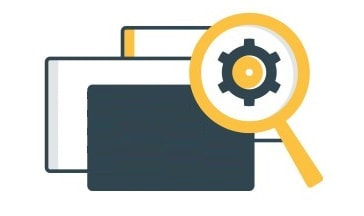Sharesies Review
We review Sharesies, the platform aiming to bring investing and saving to New Zealanders of all stages of life.
Updated 28 April 2024
Important: Sharesies Fee Change
Summary of Sharesies
Sharesies' Background
Sharesies is New Zealand's first low-fee online share investing platform. Their mission is to "create the most financially empowered generation" with a vision "give someone with $5 the same money opportunities as someone with $5,000,000". To achieve this, it now offers anybody the opportunity to invest in the NZ, Australian and US sharemarket for as little as 1 cent, through the ability to buy fractions of shares. Its customers have formed Facebook groups, appeared on adverts and in three years around 2 billion dollars has been invested. While its origins were focused on New Zealand focused, it has expanded and now offers over 8,000 investments across NZ, AU and US markets.
Our Review
In this guide, we outline what Sharesies is, what funds and shares they offer to the Kiwi investor, the pros and cons of Sharesies, and the fees. We cover:
Disclaimer: MoneyHub is not a Financial Adviser, and this guide has been published to explain the investment fundamentals and outline the pros and cons of Sharesies as an investment platform.
Warning: "Investor" Facebook Groups, Instagram Influencers and Whatsapp Groups
- On 21 December 2022, Sharesies announced a fee change that saw the average investor's brokerage fee jump from around 0.50% to 1.90%. Foreign exchange fees also increased.
- The response around the time was somewhat negative, as outlined in this Reddit forum and MoneyKing article. More complaints appear on the Sharesies Facebook page. However, Sharesies is an innovative business that has brought investing into the hands of hundreds of thousands of New Zealanders, all of which has required significant financial outlays. To help explain the need for a fee change, one of the CEOs explains the decision here.
- Please be aware that for most New Zealanders who invest around $500-$5,000 in US shares, the new fees significantly increase trading fees, making Sharesies less attractive than most other options. However, subscription packages (outlined below) offset the fee increases and offer value to New Zealanders investing for the future.
Summary of Sharesies
- The Wellington-based platform offers investment into over 136 NZX-listed companies, 37 NZX ETFs, 13 Managed Funds (unlisted), 2,000+ ASX-listed companies, 290+ ASX-ETFs, 4,400+ US-listed companies and 1,300+ US ETFs.
- There is no minimum investment size - you can invest from as little as 1c into any fund or NZX-listed company. Investors manage their portfolio via the Sharesies website and/or the app.
- The funds available are offered by Pathfinder Asset Management (an ethical fund manager), AMP Capital, and Smartshares.
- Investors can invest as little as 1 cent in any share or fund. This means you can buy 1 cent of a Fletcher Building or Spark share. In practice, an investor could purchase a fraction of every share on the NZX for less than $2 (including transaction fees), signalling just how cost-effective the transaction costs are.
- NZ Shares: Fees are 1.90% with a $25 NZD cap (which will apply for any trade above NZ$1,316).
- US Shares: Sharesies members have access to an additional 4,000+ companies and exchange-traded funds (ETFs) across the New York Stock Exchange (NYSE), Nasdaq, and Chicago Board Options Exchange (CBOE). Transaction fees are simple: 1.90% (with a US$5 cap; there is also an exchange fee of 0.5% between NZD and USD. Our Sharesies vs Hatch vs Stake Guide outlines the offering in detail, and how it compares to alternative platforms.
- Australian Shares: Sharesies members have access to 2,000+ Australian shares and ETFs. Like US shares, transaction fees are simple: 1.90% with a AU$15 cap. There is also an exchange fee of 0.5% between NZD and AUD.
- Sharesies has an auto-invest feature that lets you set-and-forget investments into a Global, Responsible, or DIY order. There’s also an order suited to kids, only available via Kids Accounts.
- Subscriptions (also known as monthly plans for investing regularly) encourage regular investments. We like the offering - the brokerage fees are generously discounted, which means more of your money flows onto your investments.
- Sharesies Save is a flexible, on-call savings account, launched in May 2023. It offers investors a high-interest savings account with no fees, no fixed terms, no restrictions on access to savings with interest calculated daily and paid monthly. The current interest rate is 4.60% p.a.
- From the perspective of user experience, Sharesies goes beyond all expectations and delivers a friendly platform that is rich in design while making investments easy.
Sharesies' Background
Sharesies is New Zealand's first low-fee online share investing platform. Their mission is to "create the most financially empowered generation" with a vision "give someone with $5 the same money opportunities as someone with $5,000,000". To achieve this, it now offers anybody the opportunity to invest in the NZ, Australian and US sharemarket for as little as 1 cent, through the ability to buy fractions of shares. Its customers have formed Facebook groups, appeared on adverts and in three years around 2 billion dollars has been invested. While its origins were focused on New Zealand focused, it has expanded and now offers over 8,000 investments across NZ, AU and US markets.
Our Review
In this guide, we outline what Sharesies is, what funds and shares they offer to the Kiwi investor, the pros and cons of Sharesies, and the fees. We cover:
- The Specs of Sharesies
- Subscriptions (Monthly Plans) for Regular Investing
- What Funds Does Sharesies Offer, and What Do They Invest In?
- Who is Sharesies Suited to?
- The Competition – Sharesies vs InvestNow, SmartShares, Simplicity and More
- The Bottom Line, Limitations and Alternatives
- 8 Things to Know About Sharesies
- Our Conclusion
Disclaimer: MoneyHub is not a Financial Adviser, and this guide has been published to explain the investment fundamentals and outline the pros and cons of Sharesies as an investment platform.
Warning: "Investor" Facebook Groups, Instagram Influencers and Whatsapp Groups
- Media reports have cited the existence of Facebook groups which discuss companies to invest in. The "advice" given is, most likely, not sufficiently reasoned to constitute any form of financial advice. We ask potential investors to be careful of following "tips" and "exclusive insights" etc that suggest investing in a particular share.
- Our view is that you should never invest in something just because you read it on Sharesies-related (or unrelated) social media communities. As this article states - "trading data seen by Stuff shows that Sharesies investors make up a disproportionately high percentage of trades in small-cap stocks, and they've lost a lot of money in the process".
- We believe that while most Sharesies members invest in robust companies, MoneyHub is aware of the existence of speculative behaviour and has also been quoted in Stuff.co.nz regarding unproven, small-cap investments.
- Please be very careful - investing in unknown companies and losing money is emotional and gives the opposite experience that long-term investing offers. If you are unsure what to invest in, our guide to investments you can own forever has must-know information.
- Want to compare Sharesies with Hatch, Stake and Tiger Brokers for US Shares? Visit our Sharesies vs Hatch vs Stake Guide, and Sharesies vs Tiger Brokers.
- Other options: Superhero offers US$2 trade fees, and Tiger Brokers offers low FX fees; our Superhero Review and Tiger Brokers Review explain more.
How does Sharesies compare with other options?
- Read our Comparing Sharesies vs Investnow vs Hatch and more guide to find out more about popular investment options.
- Worried about what happens to your investments if Sharesies collapsed or shut down? Our easy to read custodian guide explains what you need to know.
- Want to know how to trade or invest in the NZX? Our NZX in a Nutshell guide explains what you need to know.
- Want to compare ETFs with shares? Our dedicated ETFs vs Shares guide has you covered.
- Want to know about ethical investing and the opportunities available? Our ethical investing guide has you covered.
The Specs of Sharesies
For the purposes of this review, we primarily cover the New Zealand-orientated shares and funds - our guide to Sharesies vs Hatch vs Stake will help anyone wanting to invest in US shares
The fees are as follows:
Investment Products include:
If I buy into Sharesies, am I buying a share on the sharemarket?
The answer to this is yes. You can either buy a share (or a fraction of a share) directly, or a fund. The funds Sharesies offers invest in shares. Your investment in Sharesies is as diversified as the number of companies included in the fund.
Risk
How does Sharesies compare with other options?
- Shares and ETFs on Offer: Any of the 170+ NZX-listed companies, for example Spark, Auckland Airport, The Warehouse, A2 Milk etc. In addition to this, there are thousands of US-listed shares and ETFs (our comparison of Sharesies with Hatch and Stake is outlined here), as well as Australian shares and ETFs.
- Managed Funds: Outside of the shares and ETFs, there are a number of New Zealand managed funds available.
- Portfolio Management: Sharesies offers a member-login via website and phone app for day-to-day investing and portfolio management. Investors, with either tool, can continuously track their investments.
The fees are as follows:
- New Zealand Share purchases brokerage fees - When you buy and sell shares in companies, you’ll be charged a transaction fee based on the dollar amount of each order—these are also known as ‘brokerage fees’. Currently, the brokerage fees are as follows - 1.90% with a $25 cap. This means if you purchase $500 in shares in one company, you'll pay $9.50 in brokerage fees. If you sell the shares later, you'll pay 1.90% of the transaction value as a brokerage fee.
- US Share purchases brokerage fees: In keeping with the New Zealand share brokerage fees, Sharesies charges 1.90% with a US$5 cap. All US brokerage fees are charged in USD. Our Sharesies vs Hatch vs Stake Guide compares the options in detail. There is also an exchange fee of 0.5% between NZD and USD.
Australian Share purchases brokerage fees: 1.90% with an AU$15 cap with an exchange fee of 0.5% between NZD and AUD.
Investment Products include:
- Cash (i.e. bank deposits in New Zealand banks)
- New Zealand Fixed Income (i.e. investments in government bonds or company debt)
- New Zealand Shares (i.e. shares in Spark, Fletcher Building and Air New Zealand) and ETFs
- Australian Shares and ETFs
- US Shares and ETFs
- International Fixed Income bonds and deposits (via index funds)
- International Shares (via index funds, or purchasing US shares directly)
- Note: Investors can gain exposure to a range of asset classes such as Cash, Commodities, Real estate, Fixed Income through investment in managed funds and/or ETFs.
If I buy into Sharesies, am I buying a share on the sharemarket?
The answer to this is yes. You can either buy a share (or a fraction of a share) directly, or a fund. The funds Sharesies offers invest in shares. Your investment in Sharesies is as diversified as the number of companies included in the fund.
Risk
- The 35+ funds each offer a unique investment strategy. Some are low risk, some a medium risk and some are high risk. The returns/profit you make don’t necessarily depend on the risk you take.
- All international Sharesies funds are 100% hedged to the New Zealand dollar. This means that if our dollar rises against any overseas currency your Sharesies has investments in, the value of the overseas investment does not reduce due to the hedging in place. This eliminates exchange rate movement as an investment risk, so your overseas portfolio won’t be affected by the day-to-day movements of the Kiwi dollar.
How does Sharesies compare with other options?
- Read our Comparing Sharesies vs Investnow vs Managed Funds and more guide to find out more about popular investment options.
- Want to compare Sharesies with Hatch and Stake for US Shares? Visit our Sharesies vs Hatch vs Stake Guide
- Worried about what happens to your investments if Sharesies collapsed or shut down? Our easy to read custodian guide explains what you need to know.
- Want to know how to trade or invest in the NZX? Our NZX in a Nutshell guide explains what you need to know.
- Want to compare ETFs with shares? Our dedicated ETFs vs Shares guide has you covered.
- Want to know about ethical investing and the opportunities available? Our ethical investing guide has you covered.
Need to Knows: Requirements to open up a Sharesies account:
- Anyone can open a Sharesies account, including children. You must however have a New Zealand bank account and be living in New Zealand.
- You’ll also need proof of address and a form of ID
- You’ll need to pick which fund(s) you want to invest in based on your sensitivity to risk
Subscriptions (Monthly Plans) for Regular Investing
Sharesies offers three monthly plans to New Zealanders who want to invest regularly. These offer excellent value for money; the more you commit to contributing, the lower the brokerage percentage. Investors also benefit from brokerage-free auto-investing (up to a certain limit). However, despite the generous investing cap for a low fixed monthly fee, the allowances don't roll over to other months (meaning your commitment needs to be consistent, and once your plan's coverage is used up, the 1.90% transaction fee (and capped fee amounts per order) apply until your plan renews.
$3 monthly plan:
$7 monthly plan:
$15 monthly plan:
$3 monthly plan:
- Access to US, NZ, and Aussie shares.
- Each month, you'll get transaction fees covered on $500 NZD of buy and sell orders, and $1,000 NZD of auto-invest orders.
- Brokerage calculates to be 0.60% (excluding auto-invest).
$7 monthly plan:
- Access to US, NZ, and Aussie shares.
- Each month, you'll get transaction fees covered on $1,000 NZD of buy and sell orders, and $3,000 NZD of auto-invest orders.
- Brokerage calculates to be 0.70% (excluding auto-invest).
$15 monthly plan:
- Access to US, NZ, and Aussie shares.
- Each month, you'll get transaction fees covered on $5,000 NZD of buy and sell orders, and $10,000 NZD of auto-invest orders.
- Brokerage calculates to be 0.30% (excluding auto-invest).
What Funds Does Sharesies Offer, and What Do They Invest In?
There are 25+ funds in total, outlined below in the categories of:
Some offer low risk, some are medium risk and some are high risk. The returns/profit you make don’t necessarily depend on the risk you take. Examples of the funds available include:
Pie Funds
PIE Funds is a boutique investment manager that has generated long-term wealth for clients since 2007. Outside of Sharesies and InvestNow, the minimum investment is $25,000 - Sharesies makes Pie far more accessible. The two funds on offer are:
Socially responsible investments (Pathfinder)
1. Pathfinder Global Responsibility Fund (Higher risk)
Fees: 0.93% per year of your investment, and 0.05% when buying or selling
Investment profile: This fund invests in “socially responsible companies around the world”, so excludes companies involved in restricted industries such as gambling, tobacco, controversial weapons and thermal coal. Companies in this index have the highest Environmental, Social and Governance (ESG) score.
2. Pathfinder Global Water Fund (Higher risk)
Fees: 1.30% per year of your investment, and 0.05% when buying or selling
Investment profile: This fund Invests in “socially responsible companies around the world” specifically involved in the water industry; water treatment, pipe and pump manufacturing and specialist engineering, but excludes bottled water companies in the water fund.
3. Pathfinder Global Property Fund (Medium Risk)
Fees: 1.00% per year of your investment, and 0.05% when buying or selling
Investment profile: This fund invests in global property companies including traditional office, retail, industrial and residential properties, as well as other property investments like data centres, cell towers and healthcare facilities.
Want to know more about ethical investing? Read our dedicated guide.
Exchange-traded funds (Smartshares ETFs)
Most of these are Index Funds (excluding the NZ Bond Fund) which invest in Smartshares. This means that your money is spread out over a number of companies within the fund. Some of the most popular Smartshares ETFs include:
1. NZ Top 50 Fund (Higher risk)
Investment profile: This fund invests in the 50 largest companies listed on the New Zealand Stock Exchange (NZX), including companies like, Spark, Fisher & Paykel Healthcare and Auckland Airport. The investments are not made equally – the biggest companies in market value get more of your money (i.e. Spark (large) vs Trademe (smaller).
2. Australian Top 20 Fund (Higher risk)
Investment profile: This fund invests in the top 20 companies listed on the Australian Stock Exchange (ASX), including shares like ANZ Bank, Qantas, Woolworths, and the Commonwealth Bank of Australia.
3. US 500 Fund (Higher risk)
Investment profile: This fund invests in the top 500 companies in the United States, including shares like Apple, Alphabet, amazon.com, and Facebook.
4. NZ Property Fund (Medium risk)
Investment profile: The NZ Property Fund invests in property companies listed on NZX. These are companies which own a lot of commercial, industrial and/or residential property. Examples include Kiwi Properties Group Limited and Argosy Property.
5. Australian Resources Fund (Higher risk)
Investment profile: Your investment will be spread across the top 200 companies in the resources sector that are listed on the Australian Stock Exchange (ASX). This includes companies in Energy, Metals and Mining sectors.
6. Europe Fund (Higher risk)
Investment profile: This fund invests in top sized companies based in Austria, Belgium, Denmark, Finland, France, Germany, Greece, Ireland, Italy, the Netherlands, Norway, Portugal, Spain, Sweden, Switzerland and the UK, with more than 1,200 shares held by the fund.
7. NZ Mid Cap (Medium risk)
Investment profile: This fund invests in some of New Zealand's top growth companies like Chorus, Air New Zealand, and Comvita. It includes companies in the NZ Top 50 but with the top 10 and dual-listed Australian banks removed.
8. Emerging Markets Fund (Higher risk)
Investment profile: This fund invests in companies based in “emerging” markets around the world, including China, Mexico, Brazil, Taiwan, and South Africa. This fund has high potential for growth, but also high risk - share prices may swing up and down more than that of share prices of companies in developed countries. This fund is really only appropriate for long-term investing goals.
9. Global Automation & Robotics Fund (Higher Risk)
Investment profile: This fund invests in over 100 companies worldwide working in the area of automation and robotics, operating in the USA, Japan, Taiwan, Germany, United Kingdom and more. It is managed by BlackRock, the world’s largest asset manager.
10. Global Healthcare Innovation Fund (Higher Risk)
Investment profile: This fund invests in over 70 companies around the world that focus on innovating in healthcare services, operating in the USA, South Korea, Japan, Germany, India and more.
How does Sharesies compare with other options?
- Pie Funds
- Milford
- Mercer
- TAHITO
- Socially responsible investments (Pathfinder)
- Exchange-traded funds (Smartshares ETFs)
Some offer low risk, some are medium risk and some are high risk. The returns/profit you make don’t necessarily depend on the risk you take. Examples of the funds available include:
Pie Funds
PIE Funds is a boutique investment manager that has generated long-term wealth for clients since 2007. Outside of Sharesies and InvestNow, the minimum investment is $25,000 - Sharesies makes Pie far more accessible. The two funds on offer are:
- The Australasian Dividend Fund (refer to the latest returns here)
- The Global Climate Friendly Fund (refer to the latest returns here)
Socially responsible investments (Pathfinder)
1. Pathfinder Global Responsibility Fund (Higher risk)
Fees: 0.93% per year of your investment, and 0.05% when buying or selling
Investment profile: This fund invests in “socially responsible companies around the world”, so excludes companies involved in restricted industries such as gambling, tobacco, controversial weapons and thermal coal. Companies in this index have the highest Environmental, Social and Governance (ESG) score.
2. Pathfinder Global Water Fund (Higher risk)
Fees: 1.30% per year of your investment, and 0.05% when buying or selling
Investment profile: This fund Invests in “socially responsible companies around the world” specifically involved in the water industry; water treatment, pipe and pump manufacturing and specialist engineering, but excludes bottled water companies in the water fund.
3. Pathfinder Global Property Fund (Medium Risk)
Fees: 1.00% per year of your investment, and 0.05% when buying or selling
Investment profile: This fund invests in global property companies including traditional office, retail, industrial and residential properties, as well as other property investments like data centres, cell towers and healthcare facilities.
Want to know more about ethical investing? Read our dedicated guide.
Exchange-traded funds (Smartshares ETFs)
Most of these are Index Funds (excluding the NZ Bond Fund) which invest in Smartshares. This means that your money is spread out over a number of companies within the fund. Some of the most popular Smartshares ETFs include:
1. NZ Top 50 Fund (Higher risk)
Investment profile: This fund invests in the 50 largest companies listed on the New Zealand Stock Exchange (NZX), including companies like, Spark, Fisher & Paykel Healthcare and Auckland Airport. The investments are not made equally – the biggest companies in market value get more of your money (i.e. Spark (large) vs Trademe (smaller).
2. Australian Top 20 Fund (Higher risk)
Investment profile: This fund invests in the top 20 companies listed on the Australian Stock Exchange (ASX), including shares like ANZ Bank, Qantas, Woolworths, and the Commonwealth Bank of Australia.
3. US 500 Fund (Higher risk)
Investment profile: This fund invests in the top 500 companies in the United States, including shares like Apple, Alphabet, amazon.com, and Facebook.
4. NZ Property Fund (Medium risk)
Investment profile: The NZ Property Fund invests in property companies listed on NZX. These are companies which own a lot of commercial, industrial and/or residential property. Examples include Kiwi Properties Group Limited and Argosy Property.
5. Australian Resources Fund (Higher risk)
Investment profile: Your investment will be spread across the top 200 companies in the resources sector that are listed on the Australian Stock Exchange (ASX). This includes companies in Energy, Metals and Mining sectors.
6. Europe Fund (Higher risk)
Investment profile: This fund invests in top sized companies based in Austria, Belgium, Denmark, Finland, France, Germany, Greece, Ireland, Italy, the Netherlands, Norway, Portugal, Spain, Sweden, Switzerland and the UK, with more than 1,200 shares held by the fund.
7. NZ Mid Cap (Medium risk)
Investment profile: This fund invests in some of New Zealand's top growth companies like Chorus, Air New Zealand, and Comvita. It includes companies in the NZ Top 50 but with the top 10 and dual-listed Australian banks removed.
8. Emerging Markets Fund (Higher risk)
Investment profile: This fund invests in companies based in “emerging” markets around the world, including China, Mexico, Brazil, Taiwan, and South Africa. This fund has high potential for growth, but also high risk - share prices may swing up and down more than that of share prices of companies in developed countries. This fund is really only appropriate for long-term investing goals.
9. Global Automation & Robotics Fund (Higher Risk)
Investment profile: This fund invests in over 100 companies worldwide working in the area of automation and robotics, operating in the USA, Japan, Taiwan, Germany, United Kingdom and more. It is managed by BlackRock, the world’s largest asset manager.
10. Global Healthcare Innovation Fund (Higher Risk)
Investment profile: This fund invests in over 70 companies around the world that focus on innovating in healthcare services, operating in the USA, South Korea, Japan, Germany, India and more.
How does Sharesies compare with other options?
- Read our Comparing Sharesies vs Investnow vs Hatch and more guide to find out more about popular investment options.
- Want to compare Sharesies with Hatch and Stake for US Shares? Visit our Sharesies vs Hatch vs Stake Guide
- Other options: Superhero offers US$2 trade fees, and Tiger Brokers offers low FX fees; our Superhero Review and Tiger Brokers Review explain more.
- Worried about what happens to your investments if Sharesies collapsed or shut down? Our easy to read custodian guide explains what you need to know.
- Want to know how to trade or invest in the NZX? Our NZX in a Nutshell guide explains what you need to know.
Who is Sharesies Suited to?
Standout Features:
But be aware:
More information:
- Best For: Anyone looking to start building up an investment portfolio with low costs and easy access. With no minimum investment, members have access to 170+ NZX shares and 35+ managed funds, there is a lot of pick from. Beyond that, there are thousands of opportunities via the Australian and US exchanges. While the brokerage fees have gone from 0.50% to 1.90%, Sharesies still ofers some value for small-scale investors.
- While both InvestNow and Smartshares offer a range of funds and/or ETFs, Sharesies is by far the most flexible in terms of investment opportunities. For example, a $1,000 investment can buy $400 of shares in a company you think has growth potential, $400 into a managed global fund and $200 into a sustainable investment fund. However, the fees can add up given the 1.90% brokerage.
- Most suitable investor: Sharesies offers something for low-value investors gaining experience; while the original target market was under 40 and small-scale investors, the fee hike is likely to have disrupted the 'message' of Sharesies. We will update the review as developments in their customer base get reported on.
Standout Features:
- Flexible investing with no minimum investment, perfect for newbie and experienced investors looking to get into the sharemarket while avoiding brokerage fees on individual trades.
- User-friendly website and app for monitoring investment performance.
- 170+ NZX-listed companies, ETFs and managed funds, with management fees between 0.30-1.30% (charged by the fund manager, not Sharesies).
- The diverse number of funds means you can focus on particular industry sectors in specific countries, such as Australian property, New Zealand property and global emerging markets.
- The numerous socially responsible funds will likely appeal to investors looking for ethical investments.
But be aware:
- The fees may be more expensive than Hatch and ASB Securities if you trade large amounts.
- Certain funds not marked as “sustainable” may make investments in companies trading in weapons, tobacco, nuclear and other “unethical” business. The US 500 fund is an example of that.
- As is the case with any index fund or equities investments, markets go up and down. The Dotcom bubble in the early 2000s sank global indexes, as did the 2008 Global Financial Crisis. All indexes are now at record highs, but this is no guarantee of future earnings.
More information:
- Want to compare Sharesies with InvestNow, Hatch and other platforms? Read our Comparing Sharesies vs Investnow vs Hatch and more guide.
- Want to compare ETFs with shares? Our dedicated ETFs vs Shares guide has you covered.
- Want to compare Sharesies with Hatch, Stake and Tiger Brokers for US Shares? Visit our Sharesies vs Hatch vs Stake Guide, and Sharesies vs Tiger Brokers.
The Competition – Sharesies vs InvestNow, Smartshares, Simplicity and More
- In a nutshell, Sharesies is one of the cheapest platforms in its class for small investors. No New Zealand-based platform offers more opportunities by way of shares, ETFs and managed funds.
- Sharesies offers many funds which are also offered by Smartshares. The other funds are managed by AMP Capital and Pathfinder.
- The benefits of Sharesies is that investments can be as little as $5, but for a serious investor willing to contribute at least $1,000 a year to their fund, the free fee offering from InvestNow is far more competitive.
- Simplicity offers index-based funds - when it comes to management fees, the Growth fund is 0.31% per year, whereas the NZ Share and Bond funds have a low 0.10% fund management fee. However, the platform is for somewhat serious investors - Simplicity funds have a minimum investment of $1,000 (Sharesies starts at $5).
How does Sharesies compare with other options?
- Our tables below outline US and Australian investing and the options available:
US Shares - Sharesies vs Hatch vs Stake vs Superhero vs Tiger Brokers vs Jarden Direct vs ASB Securities
Our table below reflects the differences between trading platforms when buying US$1,500 shares (for example, around 9-10 Apple shares, or 5 Microsoft shares)
- All fees and costs are in USD
- Some platforms call their brokerage fee a 'transaction' fee or similar, but for the purposes of our comparison, we have kept the column's title consistent.
- We've ranked Superhero second in the table due to its conversion fee. Customers are charged NZ$0.50 for every US$100 converted from USD back to NZD. We believe this neutralises the seemingly higher 0.50% fee charged when converting NZD to USD (e.g. US$0.50 per NZ$100 exchanged) for the purchase of US shares or ETFs.
Investment Platform |
Brokerage fee |
FX fee NZD:USD |
Pass-through fees / Agency fee |
Total Cost |
Minimum $2 per order (flat fee to buy or sell up to 200 shares and USD 0.01 for every additional share after that per transaction) |
0.35% |
$0.003 per share |
$ 7.25 |
|
$2 |
0.50% (charged in USD) |
nil |
$9.50 |
|
$0.01 per share minimum $3 per order |
0.50% |
nil |
$10.50 |
|
Sharesies |
1.9% up to a cap of $5 |
0.50% |
nil |
$12.50 |
$3 |
1.00% |
nil |
$18.00 |
|
0.60% (minimum of US$50 per trade plus agency fee) |
Not disclosed |
0.40% minimum $40 per order |
At least $90.00 |
|
Greater of $69.50 or 0.60% for approved NYSE and NASDAQ Listed Securities
|
Up to 1.50% (the current margin applied is 0.89% as at 5 May 2023 per their guidance) |
nil |
$82.85 |
- Read our Comparing Sharesies vs Investnow vs Hatch and more guide to find out more about popular investment options.
- Want to compare Sharesies with Hatch, Stake and Tiger Brokers for US Shares? Visit our Sharesies vs Hatch vs Stake Guide, and Sharesies vs Tiger Brokers.
- Worried about what happens to your investments if Sharesies collapsed or shut down? Our easy to read custodian guide explains what you need to know.
- Want to know how to trade or invest in the NZX? Our NZX in a Nutshell guide explains what you need to know.
Australian Shares - Sharesies vs Superhero vs Tiger Brokers vs Jarden Direct vs ASB Securities
- Our table below reflects the differences between trading platforms when buying $1,500 shares (for example, around 300 Qantas shares, or 16 Xero shares)
- All fees and costs are in AUD
- Some platforms call their brokerage fee a 'transaction' fee or similar, but for the purposes of our comparison, we have kept the column's title consistent.
- We've ranked Superhero second; customers are charged NZ$0.50 for every AU$100 converted from AUD back to NZD. We believe this neutralises the seemingly higher 0.50% fee (AU$0.50 for every NZ$100) charged when converting NZD to AUD for the purchase of Australian shares or ETFs.
Investment Platform |
Brokerage fee |
FX fee NZD:AUD |
Pass-through fees / Agency fee |
Total Cost |
$0.025% X trade value (minimum $5 per order) |
0.35% |
0.03% X Trade Value |
$10.70, comprised of: $5 (Brokerage) $5.25 (FX) $0.45 (Pass-Through) |
|
$2 |
0.50% |
nil |
$9.50 |
|
Sharesies |
1.9% up to a cap of $15 |
0.50% |
nil |
$22.50 |
$29.00 (trade value up to $30,000) |
Up to 1.50% (the current margin applied is 0.89% as at 5 May 2023 per their guidance) |
nil |
$42.35 |
|
$15 (up to and including $1,000) $30 ($1,000 to $10,000) 0.30% (over $10,000) |
Not disclosed |
0.40% minimum $40 per order |
At least $70 |
What Others Are Saying
- On 21 December 2022, Sharesies announced a fee change that will affect most customers. In short, the average investor's brokerage fee jumps from around 0.50% to 1.90%. This excludes foreign exchange fees which are also set to increase.
- The response was negative, as outlined in this Reddit forum and MoneyKing article. More complaints appear on the Sharesies Facebook page.
- The NZ Herald reported in 2020 that Investors in Sharesies had swelled from 90,000 investors to 190,000 during the coronavirus crisis. At its peak, 2500 investors were joining a day and assets under management tripled to $560 million.
- interest.co.nz reported in 2020 that 70% of the platform's new users considered themselves new investors; new users were a bit older and had slightly larger portfolios than existing users.
- As a background to its origins, TheSpinoff.co.nz reported in 2017 that Sharesies is “an online investment tool that lets Kiwis take a slice of diversified funds without the need to make a big investment...you can get a spread of shares without stock picking and reading the tea leaves”.
The Bottom Line, Limitations and Alternatives
- Sharesies is a good initiative for new and/or small investors looking for affordable exposure to local and global sharemarkets without the need to dig deep. We like the Pathfinder funds as alternatives for socially-minded savers, but the Smartshares offering now includes a number of sustainable funds.
- The underlying investment funds offer diversity in the sharemarket (both in New Zealand and overseas) without significant risk. In short, it’s a “set and forget” offering based on the rationale being that market investment always beats a fund manager in the long term with the risks being relatively low and the returns seen to be reliable.
- With regards to user experience, Sharesies makes logging in seamless.
- The platform's low transaction fees for NZX share purchases is game-changing.
- Sharesies may not be for everyone. If you are an active or aggressive saver/investor and want a fund manager to continuously pick shares or other securities for short/medium term investment, Sharesies is not for you.
Limitations
Further help:
- Customer support is limited to email and social media, and the team won’t offer any form of financial advice as to what fund(s) to invest in.
- Sharesies isn’t for the short term. While most funds are free to buy and sell, to get the most out of index funds you’re looking at a 5-10 year investment plan.
Further help:
- Read our Comparing Sharesies vs Investnow vs Hatch and more guide to find out more about popular investment options.
- Want to compare Sharesies with Hatch and Stake for US Shares? Visit our Sharesies vs Hatch vs Stake Guide
- Worried about what happens to your investments if Sharesies collapsed or shut down? Our easy to read custodian guide explains what you need to know.
- Want to know how to trade or invest in the NZX? Our NZX in a Nutshell guide explains what you need to know.
- Want to compare ETFs with shares? Our dedicated ETFs vs Shares guide has you covered.
- Want to know about ethical investing and the opportunities available? Our ethical investing guide has you covered.
8 Must-Know Sharesies Facts
Sharesies may not always be the cheapest option for investingAs a Sharesies member, you'll pay trade fees. However, other platforms can be cheaper and some don't charge such fees. For example:
|
Signing up isn't complicated, but you’ll need to decide what to invest in as it's a DIY platformMaking an initial deposit into your Sharesies account is very straight forward for even the most inexperienced investor. After providing proof of ID and address, you’ll need to decide your initial investment to make. Sharesies provides no guidance here - Sharesies is DIY investing in every aspect.
|
Sharesies offers excellent investment diversificationAn investment in one Sharesies managed fund or ETF means you’re putting money into a number of companies, so if one doesn’t perform as expected the strength of other companies will balance out the bad eggs. For example, the NZ Top 50 Sharesies fund invests in the 50 largest New Zealand listed companies, so you are well diversified. Other funds invest in 500 or more companies, meaning you are well diversified.
|
You can make regular investments via the auto-invest featureIf you’d like to make regular contributions to your investment portfolio, Sharesies makes it easy. You set the amount you want to invest/pay, the frequency (i.e. weekly, monthly) and then the start date. Sharesies' auto-invest feature offers four options:
For more details about auto investing, Sharesles explains the features here. |
The performance of Sharesies investments are transparentSharesies offers a lot of data about your investment every time you log in. You get up to date data that tells you details like increases or decreases in value from the previous day and monthly returns. It’s made very user-friendly for beginner investors.
|
Dividends your fund(s) receive are reinvested, meaning more cash is invested on your behalfMany of the shares your fund invests in will pay dividends. These cash payments represent the profits from companies returning it to the shareholders, i.e. you. When a company declares a dividend, your fund will receive money and buy more shares in the ETF with the dividend received. For example, if you receive a $100 dividend and the ETF is currently priced at $2.00, your ETF will buy 50 more Shares on your behalf. This is the best way to increase the value of your investment. You do however get the option of being paid out in cash when a dividend is declared, and the value will be sent to your bank account.
|
Sharesies offers a proven investment model by investing in index funds (via the Smartshares ETFs in New Zealand and hundreds of other options in Australia and the US)Index funds historically outperform managed funds. According to Fortune Magazine, the S&P 500 (the major American sharemarket index) outperformed more than 82% of all active funds over a 15-year period. Given the low fees an index fund charges and the reliability in outperforming active funds, it's a relatively conservative approach to investment for your retirement.
|
Funds that don’t mention "socially responsible" are unlikely to be socially responsibleSharesies promotes two funds which are socially responsible – the Global Responsibility Fund and the Global Water Fund. The other funds contain New Zealand and overseas heavyweights, including defence/arms manufacturers and oil drillers. For this reason, only specified socially responsible funds are indeed suited to certain socially-minded investors.
|
Our Conclusion
- Sharesies is a great advancement for New Zealanders of all ages looking at an affordable way to enter the sharemarket locally (and overseas) without their investment being eaten up in brokerage fees despite the 2023 fee rise.
- With the ability to invest in any NZX, ASX and US share or ETF, and the array of index funds offered, there is significant choice for most investors. Best of all, the fees are low, there's no membership fee and features continue to be introduced.
- We like the monthly plans for regular investing - the brokerage fees are generously discounted, which means more of your money flows onto your investments.
- The benefits are numerous, including easy-to-track apps, a community focused on investor educations, and continuous roll-out of new features.
- The US share trading fees bring competition to existing platforms Hatch and Stake; all three use the same underlying dealer-broker but charge different fees depending on the value of your purchase and sale. Our Sharesies vs Hatch vs Stake guide has more details.
- The funds offered tick the box for diversity while staying committed to market heavyweights in New Zealand, Australia, the USA and Europe. Participants looking to invest in a low risk, index fund with low fees can find a lot of choice from the Sharesies funds. The three Pathfinder funds offer socially responsible investment for as little as 1 cent, unobtainable for less than $5,000 before Sharesies.
- Sharesies offers a great number of funds for a new investor - the 35+ currently available offer diversity and won't overwhelm the investor looking for the most suitable fund.
How does Sharesies compare with other options?
- Read our Comparing Sharesies vs Investnow vs Hatch and more guide to find out more about popular investment options.
- Want to compare Sharesies with Hatch, Stake and Tiger Brokers for US Shares? Visit our Sharesies vs Hatch vs Stake Guide, and Sharesies vs Tiger Brokers.
- Worried about what happens to your investments if Sharesies collapsed or shut down? Our easy to read custodian guide explains what you need to know.
- Want to know how to trade or invest in the NZX? Our NZX in a Nutshell guide explains what you need to know.
- Want to compare ETFs with shares? Our dedicated ETFs vs Shares guide has you covered.
- Want to know about ethical investing and the opportunities available? Our ethical investing guide has you covered.


















